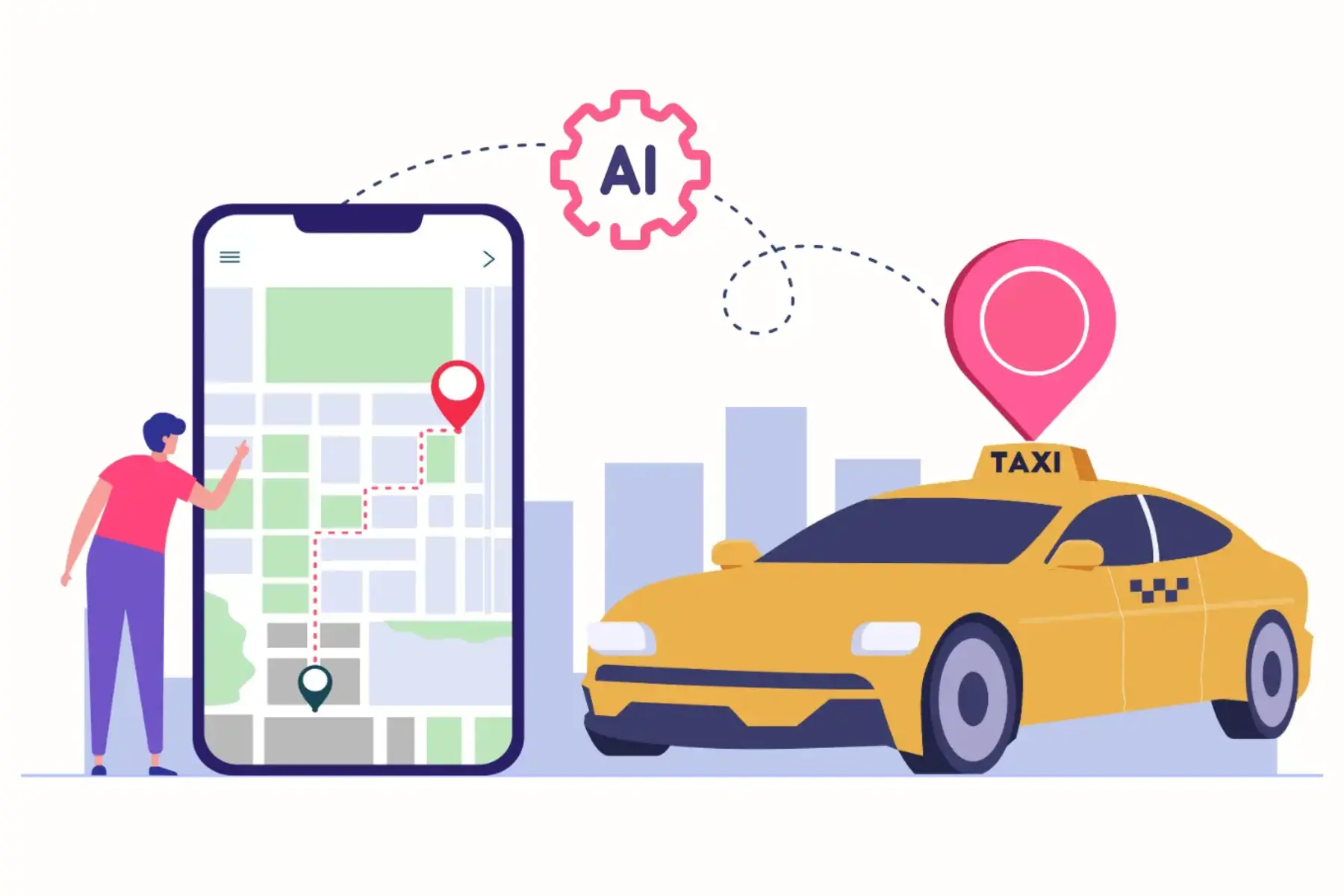The taxi industry has experienced significant changes in recent years, primarily driven by advancements in technology. One of the most impactful innovations in the industry is the use of Artificial Intelligence (AI) in improving taxi dispatch systems. These AI-powered systems have transformed how taxis are assigned to passengers, how routes are optimized, and how both drivers and passengers experience the entire journey. AI brings greater efficiency, cost savings, and enhanced customer service to taxi dispatch operations, and as it continues to evolve, the future of taxi services looks even brighter.
In this blog post, we will explore how AI is improving taxi dispatch systems, the technologies driving these improvements, and the ways in which both passengers and drivers benefit from AI’s implementation in the taxi industry. We’ll also discuss the future potential of AI in further revolutionizing taxi dispatch systems and urban transportation as a whole.
The Evolution of Taxi Dispatch Systems
Before the advent of AI, traditional taxi dispatch systems relied on human operators to manually assign taxis to passengers. A dispatcher would receive a call from a passenger requesting a ride and then use radio communication to find an available taxi driver, often leading to inefficiencies. The manual process could be slow, prone to errors, and sometimes led to miscommunication between the dispatcher and the driver, causing delays for passengers.
The introduction of GPS-based automated dispatch systems improved this process to some extent. These systems could identify the location of both passengers and drivers, making it easier to assign the nearest available taxi. However, GPS-based systems still had their limitations when it came to optimizing routes, balancing demand and supply, and predicting traffic conditions. AI technology has since taken this to the next level by providing intelligent automation and data-driven decision-making to the dispatch process.
How AI is Transforming Taxi Dispatch Systems
AI has fundamentally changed the way taxi dispatch systems operate by bringing more intelligence, speed, and efficiency to the process. Here’s a breakdown of the key ways AI is improving taxi dispatch systems:
Real-Time Demand Prediction
One of the most significant ways AI enhances taxi dispatch systems is through real-time demand prediction. By analyzing historical data, traffic patterns, weather conditions, local events, and other factors, AI-powered dispatch systems can predict when and where demand for taxis will be highest. This allows taxi companies to allocate resources more effectively, ensuring that enough drivers are available in high-demand areas at peak times.
For instance, AI systems can predict that a certain neighborhood will see a surge in demand for taxis due to an upcoming concert or a major sporting event. By analyzing past behavior and current data, the AI can recommend dispatching more drivers to that area before the event ends, ensuring that passengers can get a ride quickly. This type of proactive resource allocation not only reduces wait times for passengers but also helps drivers find fares more efficiently.
Dynamic Pricing Optimization
AI is also being used to improve pricing models in taxi dispatch systems through dynamic pricing optimization. Similar to how ride-hailing companies like Uber and Lyft use surge pricing during periods of high demand, AI-enabled dispatch systems can automatically adjust taxi fares based on real-time supply and demand conditions.
For example, during rush hour or when there’s a spike in passenger requests, the AI system can increase fares to incentivize more drivers to enter the area. On the flip side, during periods of low demand, the system can lower fares to attract more passengers. This dynamic pricing helps ensure a balance between supply and demand, reducing the likelihood of driver shortages or long wait times for passengers.
By using AI for pricing optimization, taxi companies can better manage customer expectations, providing fair pricing for both passengers and drivers while maximizing revenue during peak times.
Route Optimization and Real-Time Navigation
One of the most practical applications of AI in taxi dispatch systems is route optimization. AI-powered navigation systems can analyze real-time traffic data, road conditions, and potential obstacles to determine the most efficient route for each ride. This reduces travel times, saves fuel, and ensures that passengers reach their destination as quickly as possible.
Unlike traditional GPS systems, which rely solely on location data to suggest routes, AI-based systems use advanced algorithms to make more informed decisions. These systems take into account factors such as traffic jams, accidents, road closures, and even construction work. They can reroute taxis in real time to avoid delays, and they continuously learn and improve from previous trips to provide even better recommendations over time.
For example, if a driver encounters heavy traffic on the way to pick up a passenger, the AI system can quickly reroute them to a less congested street, ensuring that the pickup is still timely. Similarly, once the passenger is in the car, the AI will continue to optimize the route to the destination, saving time for both the driver and the passenger.
Intelligent Dispatch Algorithms
AI-powered dispatch systems use intelligent algorithms to assign the best-suited taxi to each passenger request. Traditional systems might assign a driver based solely on proximity to the passenger, but AI dispatch systems consider multiple factors when making this decision, such as traffic conditions, the driver’s current location relative to the destination, and the driver’s experience or past performance.
For instance, if two drivers are equidistant from a passenger, the AI dispatch system might choose the driver with the higher customer rating or the one who is on a faster route, even if both are nearby. These intelligent dispatch decisions help improve the overall quality of service, reduce wait times, and optimize the workload for drivers.
Some AI systems also use machine learning algorithms to learn from past dispatches. If a certain driver consistently provides better service in certain neighborhoods or excels during high-demand times, the AI will take that into account for future assignments, ensuring passengers receive the best possible experience.
Predictive Maintenance and Fleet Management
AI isn’t just improving the way taxis are dispatched—it’s also helping to keep the vehicles in top condition. AI-powered predictive maintenance systems analyze data from vehicle sensors to predict when a taxi will need servicing. This allows taxi companies to schedule maintenance proactively, reducing the risk of breakdowns and ensuring that their fleet is always operational.
For example, AI can monitor factors such as engine performance, tire wear, and fuel efficiency. If the system detects that a certain taxi is due for maintenance based on these metrics, it can alert the dispatch system to take the vehicle out of service for repairs before a problem arises. This prevents unexpected downtime, improves vehicle reliability, and extends the lifespan of the taxi fleet.
Moreover, AI-driven fleet management systems can optimize the deployment of taxis, ensuring that the right number of vehicles are available in different areas at different times. This ensures that taxis are not sitting idle in low-demand areas while other regions experience shortages, further increasing efficiency.
Enhancing Driver Performance and Customer Experience
AI is playing an increasingly important role in improving both driver performance and the overall customer experience. AI systems can monitor and evaluate driver behavior, including driving speed, braking patterns, and adherence to traffic laws. This data is then used to provide feedback to drivers, helping them improve their skills and maintain safe driving habits.
For example, if a driver frequently accelerates too quickly or brakes harshly, the AI system can flag this behavior and suggest improvements. Over time, this leads to safer, smoother rides for passengers and reduces the likelihood of accidents or complaints.
In addition, AI-powered dispatch systems can also incorporate customer feedback and ratings into their algorithms. If a passenger consistently gives a driver high ratings, the AI system may prioritize that driver for future rides, ensuring that high-quality drivers receive more work and that passengers are matched with drivers who have a strong track record of excellent service.
Reducing Environmental Impact
AI can also help reduce the environmental impact of taxi services by optimizing routes and reducing fuel consumption. With better route planning and real-time traffic management, AI-powered dispatch systems can minimize the amount of time taxis spend idling in traffic or driving inefficiently. This not only saves fuel but also reduces emissions, contributing to a greener, more sustainable transportation ecosystem.
In some cities, AI systems are being integrated with electric or hybrid taxi fleets, using predictive algorithms to manage charging times and battery levels more efficiently. By ensuring that electric taxis are charged and ready for use during peak demand periods, AI helps maximize the availability of eco-friendly transportation options.
Benefits of AI-Enhanced Taxi Dispatch Systems for Passengers
AI-driven dispatch systems offer a host of benefits for passengers, significantly improving the overall user experience. Here are some of the key advantages:
Reduced Wait Times: With AI optimizing the allocation of taxis, passengers experience shorter wait times, especially during peak hours or in high-demand areas.
Faster, More Efficient Routes: AI’s ability to optimize routes in real time ensures that passengers reach their destinations more quickly, even in areas with heavy traffic.
Accurate Fare Estimates: AI systems provide more accurate fare estimates by analyzing real-time conditions, ensuring that passengers know what to expect before their trip begins.
Improved Safety: AI systems can monitor driver behavior and provide feedback, ensuring that drivers adhere to safe driving practices and improving passenger safety.
Enhanced Customer Service: With intelligent dispatch algorithms that consider driver performance and customer preferences, passengers are more likely to be matched with high-quality drivers who offer excellent service.
Benefits of AI-Enhanced Taxi Dispatch Systems for Drivers
AI-powered dispatch systems also offer numerous benefits for taxi drivers, helping them operate more efficiently and increase their earnings. Some of the key advantages for drivers include:
Optimized Routes: AI systems help drivers avoid traffic congestion and find the most efficient routes, reducing travel time and fuel consumption.
Higher Earnings: With dynamic pricing and better route optimization, drivers can complete more rides in less time, leading to higher earnings.
Improved Workload Management: AI dispatch systems ensure that drivers are assigned rides based on factors like proximity, traffic conditions, and driver performance, leading to a more balanced and efficient workload.
Real-Time Feedback: AI systems provide drivers with real-time feedback on their driving habits,





